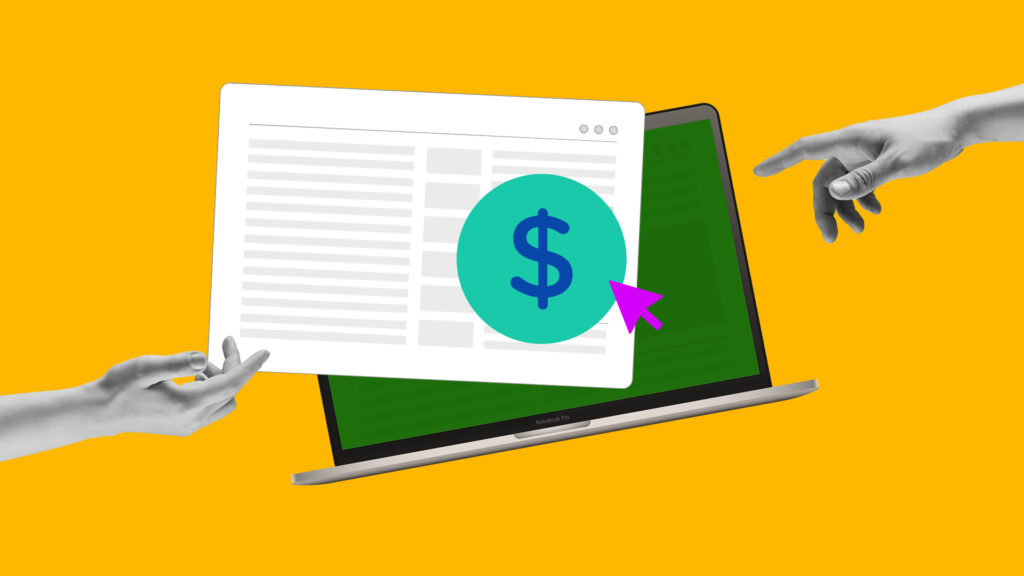MVPD (Multichannel Video Programming Distributor)
by The MNTN Team
7 Min Read
MNTN is the Hardest Working Software in Television. Get started today. Be on TV tomorrow.Learn More

5 Min Read
Pay-per-click (PPC) campaigns are a staple of performance marketing. Only paying for when someone interacts with your ad content is a great means of retaining control of your marketing budget and tracking spending. However, you can’t see the entire PPC picture without measuring your cost-per-click (CPC).
Calculating CPC helps you assess the cost-effectiveness of your campaigns by showing how much you are paying for each ad click. Below, you’ll learn what CPC is and discover actionable insights to help you make the most of every advertising dollar.
Cost-per-click refers to the price you pay every time someone clicks on your online ad. Facebook, Google Ads, and other digital advertising spaces all use this popular pricing model, making it one of the most widely used digital marketing metrics.
Within the pay-per-click model, you’ll bid for placements, and each time a user clicks on your ad you’ll pay a specified amount. That amount is your CPC, meaning it measures the cost of driving traffic to your website or landing page. The lower your CPC, the further you can stretch your advertising budget.
Your cost-per-click directly impacts your budget and overall campaign performance. If you can keep it low, you can reach more prospects with a finite budget. Managing your CPC also ensures you’re not overspending to achieve a certain amount of impressions and lead-related goals.
Calculating CPC is simple and can be done with basic data from your advertising campaigns. All you need to know is how much you’ve spent on a campaign and how many clicks you’ve received.
CPC = Total Cost of Campaign / Total Number of Clicks
Let’s say you’re running a pay-per-click campaign for an online clothing store. Over a month, you spend $1,000 on Google Ads and generate 2,000 clicks to your website. Using the CPC formula, you can determine that your cost-per-click is $0.50.
With that information, you can then assess whether your CPC is cost-effective based on how many of those clicks turn into purchases and how much revenue you generate.
A reasonable CPC depends on your industry, conversion rate, and how much money you generate from each sale. Some industries have a higher CPC because they are extremely competitive or very lucrative. The legal and finance sectors have some of the highest average CPCs. For instance, it’s not uncommon for personal injury attorneys to pay $150 to $300 per click.
So what’s “normal” for your industry? If the average is $2 per click and you are paying less than that, your campaign is efficient. If you are spending more, you need to figure out why so you can make better use of your advertising budget. In general, though, the lower your CPC, the better, because it means you’re getting more bang for your buck.
The quality of those clicks, however, is just as important. It doesn’t matter if you are paying $0.10 per click if your conversion rate is still abysmal. On the other hand, a high conversion rate will be offset by an abnormally high CPC. Ultimately, you need to balance your CPC with other metrics to ensure your advertising dollars are being well spent.
If you’re looking to spend less per click, here are some tips to help:
If you only want to ensure consumers are familiar with your company and products, you should focus on raising brand awareness.
Want to make every ad dollar work harder? While CPC helps measure efficiency, true performance comes from reaching high-intent audiences and driving measurable conversions. MNTN’s platform optimizes your CTV campaigns in real time, ensuring you maximize impact—not just clicks.
Here’s how MNTN Performance TV helps performance-focused marketers:
Focus on performance, not just cost—sign up today to get started with MNTN’s self-serve software.
Understanding CPC will play a key role in optimizing your ad spending and running cost-effective campaigns. But don’t forget to balance your cost-per-click with other metrics to ensure those clicks convert into meaningful revenue for your business. Learn more about CTV advertising and OTT advertising — and learn how MNTN can help you achieve your business goals in the process.
Subscribe to the report Apple, Amazon, NBC and more use to get their CTV news.